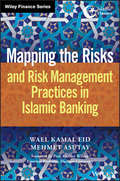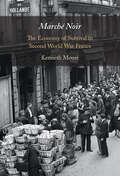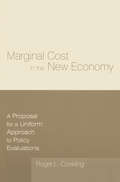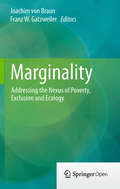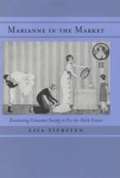- Table View
- List View
Mapping the Risks and Risk Management Practices in Islamic Banking (Wiley Finance)
by Mehmet Asutay Wael Kamal EidDeep, insightful analysis of controversial risk management issues in Islamic banking Mapping the Risks And Risk Management Practices In Islamic Banking is a comprehensive analysis of the current state of risk management practices within the Islamic banking industry, with recommendations for policy makers, bankers, and industry stakeholders. Going beyond the academic, this book presents the opinions and perceptions of industry financiers and bankers, alongside primary information and data collected by Islamic finance professionals to deconstruct and analyze the sector's current risk management practices. You'll get up to date on the latest attitudes and trends, and delve into the current issues surrounding risk management in Islamic banks. With a focus on practical applications, this authoritative guide discusses the unique risks facing Islamic banks, from the perspective of a wide range of practitioners. Risk management is one of the biggest, most controversial issues in Islamic finance, yet it remains under-researched. Many uncertainties exist for which the answers are still unclear, yet will play a large role in shaping the industry's future. This book digs deep into current ideas and practices to discover what's being done, what needs to be done, and what needs to stop happening to keep the future of Islamic finance strong. Explore both Islamic and traditional attitudes toward risk Examine current Islamic risk management practices Understand the latest industry issues and trends Consider the diverse range of risks unique to the Islamic banking sector Effective risk management in Islamic banking deserves priority attention. Unless the industry develops its own genuine risk management architecture, it cannot achieve its full potential and the viability needed for a more resilient financial system than the debunked Wall Street model. Mapping the Risks and Risk Management Practices in Islamic Banking provides a deep, authoritative analysis of where the industry is today and where it needs to develop.
Mapping the Scientific Landscape: Advances in the Drug Sciences
by Gary P. PisanoToo often discussions in both the popular press and academic studies of the pharmaceutical or biotechnology industry treat the science of drug discovery as if it were a single body of knowledge, obscuring the critical fact that not one, but several scientific revolutions have gripped drug discovery over the last 130 years. In this chapter, the author examines the historical evolution of the science of drug discovery, highlighting the heterogeneity of the scientific landscape. This chapter is excerpted from "Science Business: The Promise, the Reality, and the Future of Biotech."
Maps of Quality of Life in Argentina Since the 19th Century (The Latin American Studies Book Series)
by Juan Pablo Celemin Guillermo Angel VelázquezThe book is presented as an Atlas where the map plays a fundamental role in the study of quality of life, as it shows its progression in Argentina from the 19th to the 21st Century. In the book, it can be observed how the concept has evolved along with the dimensions and variables that better represent its spatial distribution. This is one of the original points of the book: the temporal study of the living conditions of the argentine population, empirically and spatially, emphasizing their territorial representation. Although the book maintains the same socioeconomic dimensions (education, health and housing), the tour through the different chapters offers a historical window that allows the reader to know what the forms of information collection were like in different historical moments. This book is written for geographers and members of the scientific community interested in the study of the well-being of the population. It also allows us to observe the evolution of the quality of life from the 19th century to the 21st, so it may be of interest to historians as well.
MarTech, KI und Automatisierung: Marketingtechnologie verstehen, anwenden und skalieren
by Andreas FuchsDas Marketing erlebt einen radikalen Wandel: Unternehmen stehen vor der Herausforderung, eine Flut an Technologien, Daten und Automatisierungsmöglichkeiten strategisch zu nutzen. Doch wie setzt man MarTech und Künstliche Intelligenz gezielt ein, um Wettbewerbsvorteile zu sichern? Dieses Buch verbindet wissenschaftlich fundierte Erkenntnisse mit praxisnahen Best Practices und hilft dabei, Klarheit in die oft unübersichtliche MarTech-Landschaft zu bringen. Andreas Fuchs zeigt, wie Unternehmen ihre Datenbasis optimal nutzen, personalisierte Kundenerlebnisse schaffen und Marketingprozesse intelligent orchestrieren. Das Marketing Technology Framework bildet dabei die strukturierte Grundlage – von der Datenstrategie über smarte Segmentierung bis hin zur kanalübergreifenden Kundeninteraktion. Zahlreiche Praxisbeispiele und konkrete Handlungsempfehlungen machen das Buch zu einem unverzichtbaren Leitfaden für alle, die MarTech als echten Wachstumsmotor nutzen möchten. Der Inhalt Warum MarTech die Zukunft des Marketings ist Know-Phase: Datengrundlage schaffen Analyze-Phase: Kundenverhalten verstehen und vorhersagen Orchestrate-Phase: Einheitliches Erlebnis über alle Kanäle schaffen Engage & Measure-Phase: Marketingaktivitäten messen und optimieren Künstliche Intelligenz und Automatisierung im Marketing
Mara Group
by Eugene Soltes Sara HessMara Group is a rapidly growing Pan-African conglomerate run by its entrepreneurial CEO Ashish Thakkar. The case explores Thakkar's decision on which African markets to expand operations into.
Mara Group (B)
by Eugene Soltes Sara HessMara Group is a rapidly growing Pan-African conglomerate run by its entrepreneurial CEO Ashish Thakkar. The case explores Thakkar's decision on which African markets to expand operations into.
Marc Rich and Global Commodity Trading
by Geoffrey G. Jones Espen StorliExamines the career of Marc Rich, the world's leading commodity trader before his criminal indictment in the United States in 1983. The case surveys the historical growth of commodity trading, especially in metals, from the late nineteenth century, and its evolving forms as governments intervened in markets after 1945. Rich joined Philipp Brothers, then the largest commodity trader, in 1954. He formed his own firm two decades later. He was instrumental in the creation of a spot market in petroleum, and assumed a pivotal role in the industry during the 1970s by selling Iranian oil to Israel and South Africa. The case provides a means to explore the rationale and advantages of giant commodity traders, as well as enabling students to debate corporate use of tax havens.
Marché Noir: The Economy of Survival in Second World War France
by Kenneth MouréKenneth Mouré shows how the black market in Vichy France developed not only to serve German exploitation, but also as an essential strategy for survival for commerce and consumers. His analysis explains how and why the black market became so prevalent and powerful in France and remained necessary after Liberation. Marché Noir draws on diverse French archives as well as diaries, memoirs and contemporary fiction, to highlight the importance of the black market in everyday life. Vichy's economic controls set the context for adaptations – by commerce facing economic and political constraints, and by consumers needing essential goods. Vichy collaboration in this realm seriously damaged the regime's legitimacy. Marché Noir offers new insights into the dynamics of black markets in wartime, and how illicit trade in France served not only to exploit consumer needs and increase German power, but also to aid communities in their strategies for survival.
Marcia Radosevich and Health Payment Review--1989 (A)
by Amar V. Bhide Brian MohanMartha Radosevich, president of Health Payment Review, a small software start-up, confronts a serious cash-flow problem: Health Payment Review has built a PC-based prototype but has run out of funds to build a commercially acceptable mainframe product. As a stop-gap measure to generate cash, Marcia tries to sell the PC prototype but encounters resistance from conservative buyers. Teaching Purpose: To highlight the challenges of selling and negotiation faced by entrepreneurs, and to help students develop their skills in this area.
Marcus by Goldman Sachs
by David Lane Rory McDonald Samir JunnarkarFive years on from the 2008 financial crisis, Goldman Sachs remained wounded. Revenues at the global investment bank had stagnated below pre-crisis levels, and the firm had yet to rebound from a substantial decline in securities-trading revenues. Marcus by Goldman Sachs was one response-an effort that operated as a start-up but was sponsored by senior Goldman executives-to grow the firm's revenues by entering consumer banking with digital-only offerings. The moved marked a dramatic cultural as well as product shift: the 150 year-old institution historically served only businesses and the wealthiest of individuals. In 2016, Marcus launched unsecured personal loans for the mass market; it rolled out high-yield deposits in 2017 and a credit card in partnership with Apple in 2019. By autumn of that year, Marcus had $5 billion in loans outstanding and $55 billion in deposits. It also faced a dilemma-ceaseless and rapid expansion had strained its people and infrastructure, yet Goldman expected Marcus to generate $1 billion in revenues in 2020. What now was the better bet, to pause to allow performance to catch up with growth, or to seize the additional opportunities that beckoned for Marcus to diversify into consumer finance products?
Marea negra
by Alberto Vázquez-FigueroaA finales de la década de 1970, y tras la gran crisis del petróleo de 1973 que no fue más que el punto álgido de una remontada de precios que se había iniciado en la década anterior, una comisión del Mercado Común encarga a una joven francesa una difícil misión: conseguir que Venezuela se separe de la OPEP, rompa su dependencia económica con Estados Unidos y acepte la tecnología europea a cambio de vender al Viejo Continente todo el petróleo que necesite, a precio razonable, durante cinco años. Mas para conseguirlo la mujer ha de entregarse a un general venezolano locamente enamorado de ella...
Margaret Thatcher
by Herminia Ibarra Jennifer M. SuessePortrays Margaret Thatcher's rise to the leadership of Great Britain's Conservative Party. Thatcher's political career began with her election to Parliament's House of Commons in 1959. Sixteen years later she was elected the leader of her party, and then in 1979, she became prime minister. Thatcher's emergence as a world leader illustrates her unlikely transition from ultimate outsider to powerful insider.
Margin of Trust: The Berkshire Business Model
by Lawrence Cunningham Stephanie CubaWarren Buffett and his company, Berkshire Hathaway, are legendary for their distinctive investing approach. Yet many equally unconventional but less well known aspects of Berkshire’s managerial practices and organizational structure are rich with lessons for those seeking to follow in Buffett’s footsteps. Margin of Trust is the first book to distill Buffett’s approach to management and corporate life. It provides a definitive analysis of the tenets of the Berkshire system, its costs and benefits, and how it can be adapted for other organizations.Lawrence A. Cunningham and Stephanie Cuba develop a new account of how Berkshire Hathaway works, showing that the key to its success is trust. Profiling partnership practices and business methods, they contend that Berkshire’s distinguishing feature is a culture in which autonomy and decentralization are core management principles. Cunningham and Cuba provide instructive examples of how this model has been successfully adapted by other companies that share a faith in trust as an organizing principle. They also offer candid commentary on the risks of a trust-based approach and how to mitigate them. Margin of Trust features illuminating analysis of Buffett’s take on the role trust plays in business agreements, what Buffett looks for in great corporate boards, and what lies ahead for Berkshire after its iconic leader leaves the scene.
Marginal Cost in the New Economy: A Proposal for a Uniform Approach to Policy Evaluations
by Roger L. ConklingThis volume presents an approach for resolving a variety of public policy debates. It proposes that a single standard - marginal cost methodology - be adopted to replace the haphazard arrays of methods and techniques currenly employed to measure the costs and benefits of disputed policy issues.
Marginal Organizations
by Dennis W. TafoyaIn The Marginal Organization, Tafoya focuses on organizations often described as part of an informal economy, informal sector, underground economy, or unofficial economy.
Marginal Revolution in Economics: A Reappraisal (Monographs in Mathematical Economics #6)
by Toru MaruyamaThis volume is devoted to a reappraisal of the Marginal Revolution on the occasion of its 150th anniversary. The year 1871 should be remembered as one of the most important turning points in the history of economics. W. S. Jevons, C. Menger, and L. Walras published epochal works at the very beginning of the 1870s. Although these works were written independently, they shared a common mathematical structure based on classical analysis. For this reason, the emergence of the trio is called the Marginal Revolution. Indeed, 1871 is the starting point of modern economics in the proper sense. In 1971, several academic conferences were held on the occasion of the 100th anniversary of the Revolution, which exerted the stimulating influence upon the historical researches into the Revolution. Now more than fifty years have passed since then. Economic theory has experienced further substantial changes in researchers’ central interest, the way of reasonings and the styles of description during this period. In view of the new achievements acquired in recent fifty years, it seems an indispensable task for us to review and reevaluate the Marginal Revolution based upon the present status of economics.We also keep in mind that some concepts and doctrines once discarded could reappear in a later stage of history in a more or less transfigured form. The introductory chapter will be a guide for readers not only from the economics community but also from the mathematics community.
Marginalisation and Events (Routledge Advances in Event Research Series)
by Trudie Walters Allan Stewart JepsonThis book is the first to take an in-depth examination of marginalisation and events. Marginalisation has been the subject of academic research for some time now. For example, marginalisation and exclusion have been identified as problematic in fields as diverse as geography, public health, education and media studies. However, little research has been carried out within the field of event studies. Using of a range of different theoretical and methodological approaches from a variety of disciplines, the volume applies a critical approach to events as they relate to marginalisation that seeks to address the ‘how’ and ‘why’, and to provide a holistic picture of their place and influence in the lives of marginalised individuals and communities. International through authorship and examples, it encompasses case studies from around the world, including South Africa, the United Kingdom, Italy, Afghanistan, the United States, Brazil, Portugal, Australia and New Zealand. This is essential reading for students and researchers in the fields of critical event studies, anthropology, cultural studies, tourism, sociology and management.
Marginality, Migration and Education: Educational Experiences of Migrants’ Children in Zimbabwe
by Winniefridah MatsaThis book provides a missing link between marginality, migration and education in Zimbabwe, focusing on the educational experiences of migrants’ children in an effort to influence government policies concerning migrant parents and their left-behind children. While there is a large body of knowledge on the education of children of immigrants in destination countries, this book aims to fill in the gap by addressing the children who do not migrate with their parents. Through this unique approach, the book examines the education statuses of these left-behind children, offering insights into their educational challenges, rights, and inequities to better inform policy decisions to meet the 2030 education agenda for action established by the United Nations in 2015. The book will of interest and use to governments, NGOs, teachers and local communities in Africa as a resource to better understand the situation of migrants’ left-behind children as a category of vulnerable children in difficult circumstances.
Marginality: Addressing the Nexus of Poverty, Exclusion and Ecology
by Joachim Von Braun Franz GatzweilerThis book takes a new approach on understanding causes of extreme poverty and promising actions to address it. Its focus is on marginality being a root cause of poverty and deprivation. "Marginality" is the position of people on the edge, preventing their access to resources, freedom of choices, and the development of capabilities. The book is research based with original empirical analyses at local, national, and local scales; book contributors are leaders in their fields and have backgrounds in different disciplines. An important message of the book is that economic and ecological approaches and institutional innovations need to be integrated to overcome marginality. The book will be a valuable source for development scholars and students, actors that design public policies, and for social innovators in the private sector and non-governmental organizations.
Marginalization in Urban China
by Fulong Wu Chris WebsterThis book covers social inequalities in Chinese cities and provides comparative perspectives on inequality and social polarization, neoliberalization and the poor, the change of property rights, rural to urban migration and migrants' enclaves, deprivation and residential segregation, state social security and reemployment training programs.
Maria Hernandez & Associates
by William J. Bruns Jr.This case presents the situation of an unemployed web page designer who starts a new consulting firm with personal savings and a family loan. Two months later, she is to report on operations to her father, using financial reports she must design and construct.
Maria Sharapova: Marketing a Champion (A)
by Anita Elberse Margarita GolodIn July 2004, a then 17-year-old Maria Sharapova won Wimbledon, arguably the most prestigious tennis tournament in the world. Max Eisenbud, Sharapova's agent at International Management Group (IMG), knew the championship would lead to a flood of new opportunities. What would be the best approach to the management and marketing of a champion like Maria Sharapova? Which of the various endorsement offers would be worthwhile to pursue? And how could Eisenbud best leverage the resources available to him at IMG? Allows for an in-depth examination of marketing issues and, more specifically, sports endorsement opportunities in the context of a world-class athlete. (As of 2006, Sharapova is one of the world's most recognized sports figures, and its highest compensated female athlete.) Provides unique insights into the world of "team Sharapova," consisting of Sharapova and her advisors at IMG, a leading sports, media, and entertainment agency. Contains rich data on the way in which IMG structures its sales process, and can serve to illustrate best practices and key trade-offs in sports or entertainment marketing initiatives.
Maria Sharapova: Marketing a Champion (B)
by Anita Elberse Margarita GolodAn abstract is not available for this product.
Marianne in the Market: Envisioning Consumer Society in Fin-de-siecle France
by Lisa TierstenA study of the transformation of consumerism in 19th century France and its effect on women.
